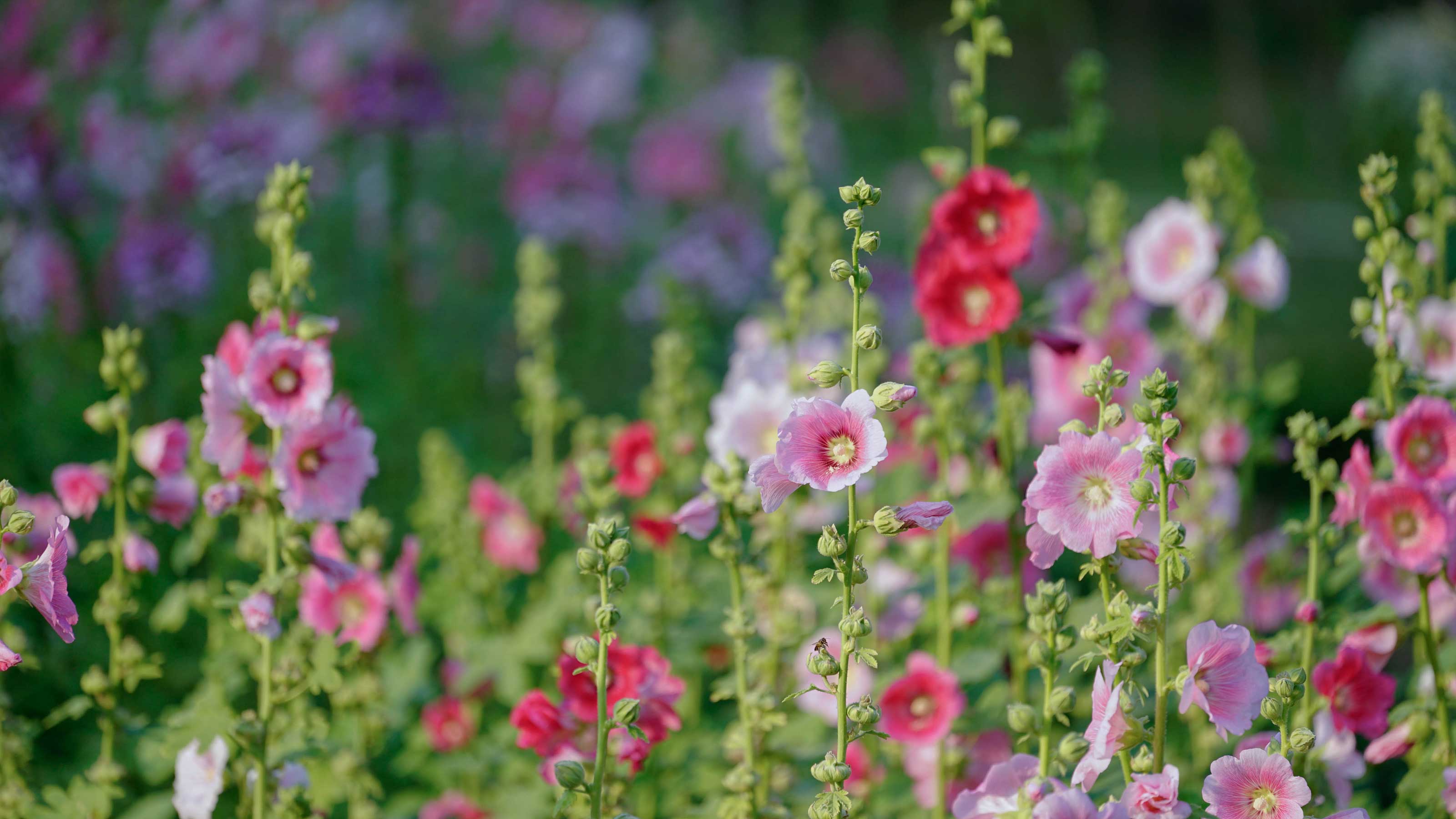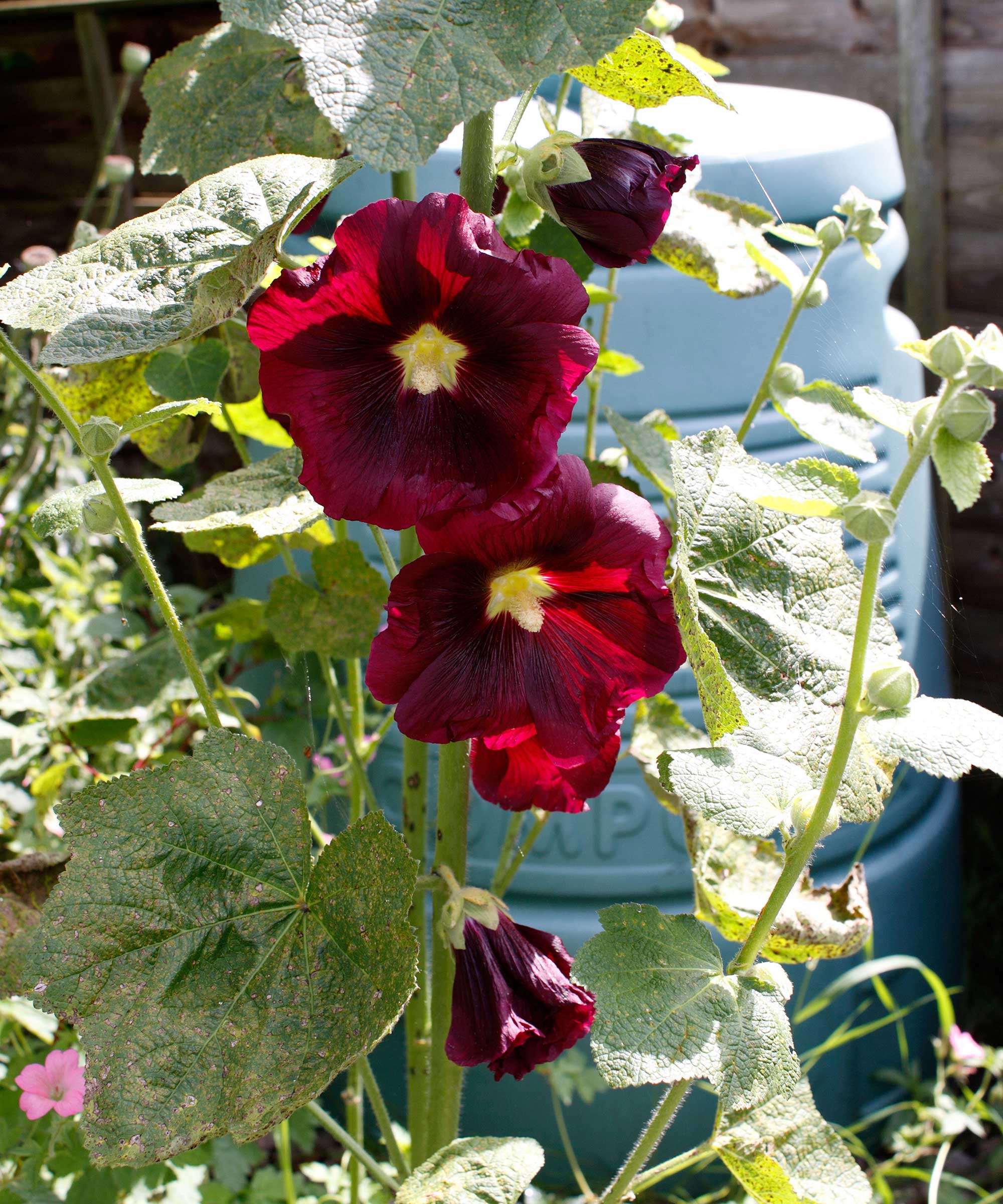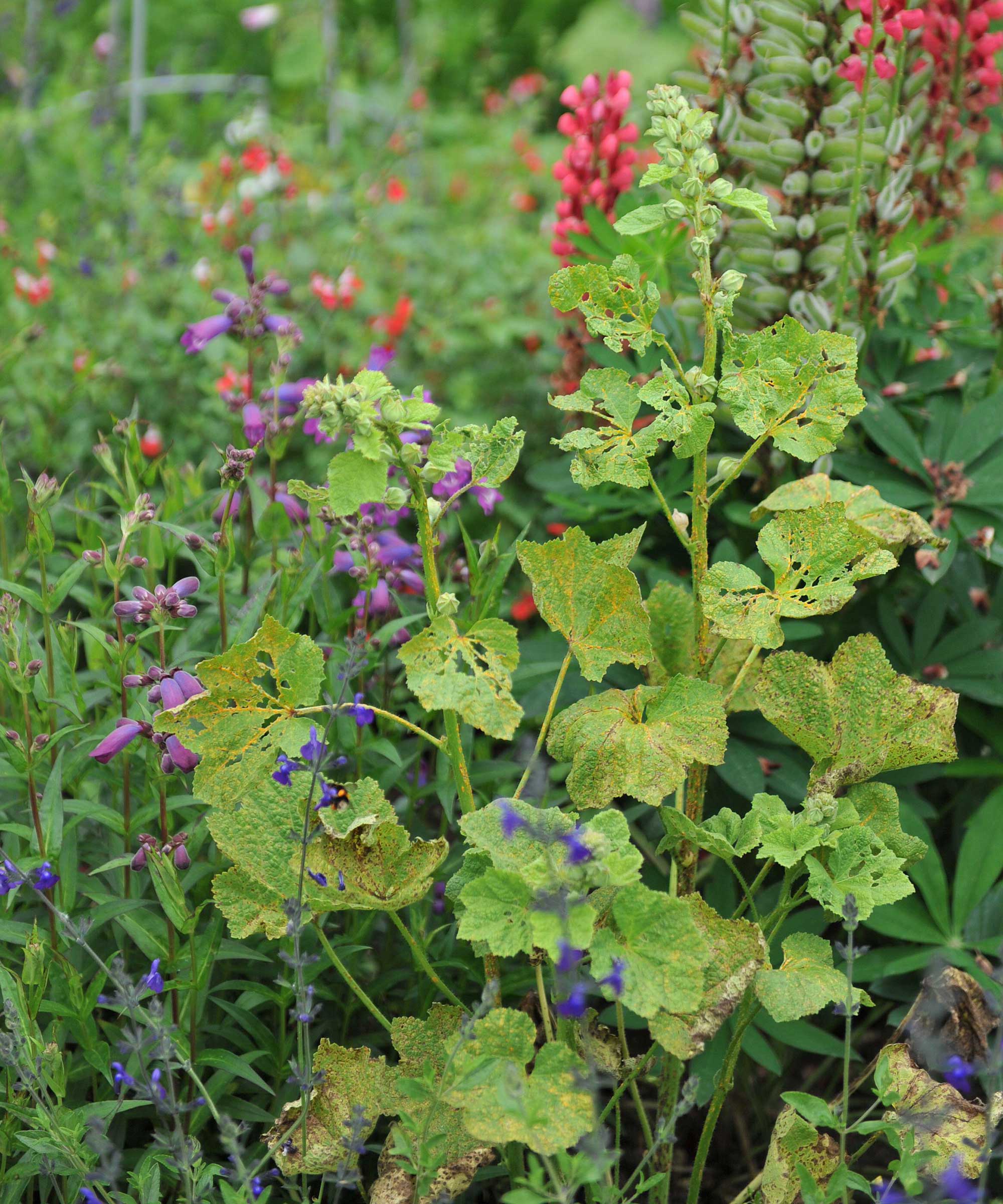Hollyhock rust: what it is and how to treat it in your garden
Our top tips on hollyhock rust will help protect these cottage-garden favorites


Have you heard of hollyhock rust? If you're growing these glorious spires of colorful blooms along the back of a border, fence, or wall, then you'll need to get the lowdown on this common problem.
A fungal disease with an unsightly appearance, it will quickly spoil perennial plants and reduce their impressive impact, whether you're using them as part of your cottage garden ideas or in a modern, urban yard. However, there are a few ways to treat it and prevent it from taking hold in the first place – if you spot it quickly enough.
What is hollyhock rust?
Hollyhock rust is a disease spread by windblown spores of Puccinia malvacearum, which can travel long distances, explains John Negus, a gardening expert from Amateur Gardening. It also affects other members of the mallow family, including hibiscus, abutilon, lavatera, malvastrum and sidalcea.
'It presents as bright orange or yellow spots on upper leaf surfaces, with darker spore-producing pustules on the underside,' John continues. 'It tends to start low and work up the plant, also contaminating stems.' Hollyhock plants that are badly affected by rust tend to lose their leaves entirely.

How to prevent hollyhock rust
There are varieties of plants that are resistant to certain diseases, such as 'Jasper' tomatoes and tomato blight. Unfortunately, this isn't the case with hollyhocks and rust.
There are some environmental factors that will help keep it away from your plants, though. As it thrives in humid conditions, it is a good idea to avoid planting your hollyhocks too closely to each other or to other plants, says the RHS. They also suggest avoiding over-wet or over-dry soil conditions to encourage good root development – something to bear in mind when watering your plants.
You can also help your plants ward off this disease by spraying them with a fungicide before any rusty red spots appear, and continuing to do so throughout the growing season.
Fungus Fighter (available on Amazon) is a systemic control that will protect them for up to three weeks, as suggested by John. He also recommends Scotts FungusClear Ultra – again, on Amazon – that will guard your plants against attack for around three months.

Alongside using fungicides and monitoring the environment, there's another solution for rust in hollyhocks: to treat all of your plants as biennials or even as annuals, rather than perennials. After all, even if they stay rust-free, they can still look rather tatty after the first year or so.
But, if you really want to try and keep them for more than one season, cut them right back to the soil and remove all plant matter in the autumn, says John. Doing so may help delay the disease’s arrival next year, as the fungus overwinters on infected plant debris.

How to treat hollyhock rust
Keep a keen eye out for symptoms on your plants. Should you spot them, remove and destroy affected plant material immediately – either by binning (not in your compost) or burning, says John. Often it is only the basal leaves that are affected – particularly if you catch it early.
Remember to wash your secateurs afterward, to avoid spreading the disease further.


The garden was always a big part of Holly's life growing up, as was the surrounding New Forest where she lived. Her appreciation for the great outdoors has only grown since then. She's been an allotment keeper, a professional gardener, and a botanical illustrator – plants are her passion.
